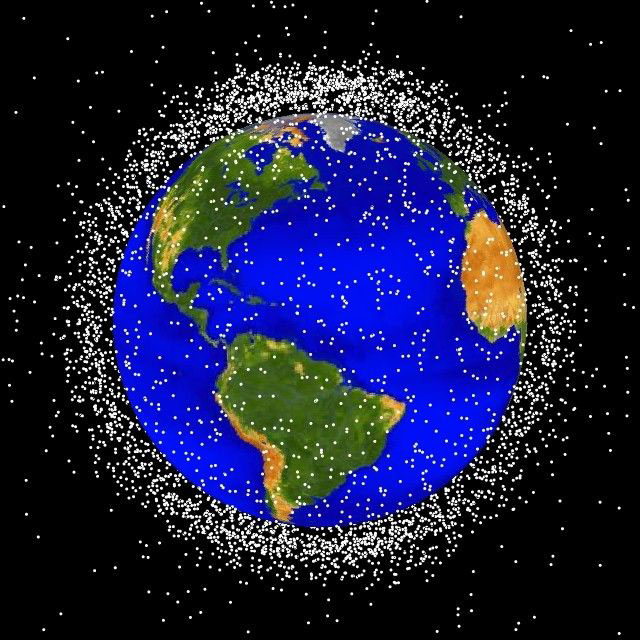I have blogged before about all the space junk orbiting the Earth. It is a huge problem and is getting worse with every launch. Space agencies on Earth are tracking over twenty three thousand pieces of space junk bigger than four inches. (For comparison, a baseball is about three inches in diameter.) It is estimated that there are trillions of smaller particles. This space junk is most dangerous to satellites that are in low Earth orbit. Low Earth orbit is considered to be between ninety nine miles and twelve hundred miles above the Earth. These particles can impact spacecraft in low Earth orbit at a combined speed of thirty thousand miles per hour. A report from NASA in 2011 said that space junk was increasing exponentially and had passed a "tipping point" to create a major threat to space exploration and exploitation.
In a new report scheduled to be published in Acta Astronautica, a member of the Russian Academy of Sciences suggests that impacts of space junk may be a "special political danger." If military or other critical satellites of one nation are destroyed by space junk collisions, it " may provoke political or even armed conflict between space-faring nations. The owner of the impacted and destroyed satellite can hardly quickly determine the real cause of the accident.”
The report goes on to say that there have been many sudden failures of defense satellites in recent decades that have never been explained. There are only a few possible explanations.
1) Collision with natural objects in space such as meteorites or cometary debris.
2) Collisions with space junk.
3) Deliberate aggressive action by an enemy.
If an important satellite is suddenly destroyed, this could lead to a "serious political dilemma" in the country that owns the satellite. They may have just been attacked but that would be difficult to prove.
The Russian report pointed out that the amount of junk in orbit has been steadily increasing over the last fifty years of human exploration of space. In addition to fragments generated by launches, the larger orbiting fragments can collide with each other and create smaller fragments in a "cascade process."
In 2013, China used a missile to destroy one of its own old weather satellites. This demonstrated that China had the ability to target and destroy a satellite in low Earth orbit. Following this event, a Russian satellite called "Blits" was disabled. It is thought that this was a result of collision with debris from the explosion that destroyed the Chinese satellite.
The International Space Station had to take action five times in 2014 to evade a collision with space junk. NASA's Space Shuttle was struck by flying bits of paint on several missions and the NASA ground staff had to replace some of its windows because of damage caused by even such small particles.
The danger of debris collisions raises the cost of every space mission because it raises of the cost of launch insurance even if a spacecraft is not damaged while in orbit. If we don't find a way to remove existing space junk and reduce the future generation of space junk, the human race may find itself shut off from outer space by a wall of space junk.
